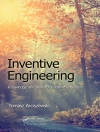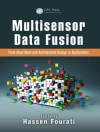- Summarises current advances in the use of seaweed and microalgae as alternative sources of protein primarily in the livestock sector
- Provides an authoritative assessment on the need for alternative protein/energy sources in the agricultural market
- Highlights the adaptability of seaweed/macroalgae for use across different diets (e.g. human, ruminant, swine, poultry, marine)
Inhoudsopgave
Part 1 Types of macroalgae and microalgae
1.Seaweed as a potential protein supplement in animal feeds: Sung Woo Kim, North Carolina State University, USA;
2.Solar energy conversion, oxygen evolution and carbon assimilation in cyanobacteria and eukaryotic microalgae: Gaozhong Shen, The Pennsylvania State University, USA;
3.Extraction of proteins and other functional components from red seaweed (Rhodophyta): Charlotte Jacobsen, National Food Institute – Technical University of Denmark, Denmark; Alireza Naseri, LACTOSAN A/S, Denmark; and Susan Løvstad Holdt, National Food Institute – Technical University of Denmark, Denmark;
Part 2 Cultivation and processing
4.Developments in commercial scale farming of microalgae and seaweeds: Sarah E. Loftus and Zackary I. Johnson, Duke University, USA;
5.Developments in algal processing: Schonna R. Manning and Reuben D. Gol, University of Texas at Austin, USA;
6.Bioprocessing of microalgal proteins and their applications in the cosmetic, nutraceutical and food industries: Jordan Wilson, Ainnatul A. Ahmad Termizi, Elvis T. Chua and Peer M. Schenk, The University of Queensland, Australia;
7.Environmental impacts of seaweed cultivation: kelp farming and preservation: Jean-Baptiste Thomas, KTH Royal Institute of Technology, Sweden; José Potting, Enviro Spotting, The Netherlands and KTH Royal Institute of Technology, Sweden; and Fredrik Gröndahl, KTH Royal Institute of Technology, Sweden;
Part 3 Applications
8.Nutritional and anti-methanogenic potentials of macroalgae for ruminants: Deepak Pandey, Nord University, Norway; Morteza Mansouryar, University of Copenhagen, Denmark; Margarita Novoa-Garrido, Geir Næss and Viswanath Kiron, Nord University, Norway; Hanne Helene Hansen, University of Copenhagen, Denmark; Mette Olaf Nielsen, Aarhus University, Denmark; and Prabhat Khanal, Nord University, Norway;
9.Developing seaweed/macroalgae as feed for pigs: Marta López-Alonso, Universidade de Santiago de Compostela, Spain; Marco García-Vaquero, University College Dublin, Ireland; and Marta Miranda, Universidade de Santiago de Compostela, Spain;
10.Microalgae: a unique source of poultry feed protein: Sahil Kalia, Andrew D. Magnuson, Guanchen Liu and Xin Gen Lei, Cornell University, USA;
11.Developing macroalgae and microalgae as feed for fish: Mo Peng, Jiangxi Agricultural University, China; Chunxiang Ai, Xiamen University, China; Zhi Luo, Huazhong Agricultural University, China; and Qinghui Ai, Key Laboratory of Mariculture (Ministry of Education of China), Ocean University of China, China;
Over de auteur
Sahil Kalia is working as a Postdoctoral Associate in the Department of Animal Science at Cornell University. He has published various research articles, abstracts, book chapters in reputed journals including Nature Publishing Group.












